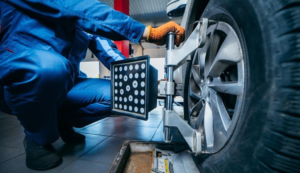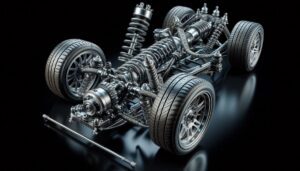Maintaining your car’s paint is about more than just keeping it looking shiny and new; it’s also about protecting the vehicle’s exterior from damage that can lead to costly repairs. Car paint serves as a barrier against environmental elements, preventing rust and corrosion. In this comprehensive guide, we’ll explore various strategies and techniques to help you extend the life of your car’s paint, ensuring it remains vibrant and intact for years to come.
1. Regular Washing
The Importance of Washing Your Car:
Regular washing is the foundation of car paint maintenance. Dirt, dust, bird droppings, tree sap, and other contaminants can adhere to your car’s surface and damage the paint if left unattended. These substances can become abrasive and scratch the paint when exposed to wind or rain.
How Often to Wash:
Ideally, you should wash your car at least once every two weeks. However, if you live in an area with a lot of pollution, near the sea (where salt can accelerate corrosion), or if your car is frequently exposed to tree sap or bird droppings, you may need to wash it more often.
Proper Washing Techniques:
- Use the Right Products: Always use car-specific soaps and shampoos. Household detergents can strip away protective waxes and harm the paint.
- Two-Bucket Method: Use one bucket for soapy water and another for rinsing your wash mitt. This reduces the risk of reapplying dirt to the car’s surface.
- Wash from Top to Bottom: This ensures that dirt from the upper parts of the car doesn’t settle on already-cleaned lower areas.
- Microfiber Mitts and Towels: These are gentle on the paint and help prevent scratches.
2. Regular Waxing
Why Waxing is Essential:
Waxing your car provides a protective layer over the paint, shielding it from UV rays, moisture, and contaminants. It also enhances the paint’s shine and makes it easier to clean.
Types of Wax:
- Natural Waxes (Carnauba): Known for providing a deep, glossy finish but may not last as long.
- Synthetic Waxes: Typically offer longer-lasting protection and are easier to apply.
Application Frequency:
Wax your car every three to four months. In harsher climates, consider waxing more frequently.
Application Tips:
- Clean Surface: Ensure the car is thoroughly washed and dried before applying wax.
- Small Sections: Apply wax in small sections using a foam applicator pad.
- Buffing: Use a microfiber cloth to buff the wax to a shine after it has hazed over.
3. Using Paint Sealants
What Are Paint Sealants?
Paint sealants are synthetic products designed to provide long-lasting protection. They create a hard shell over the paint that can last for six months to a year, depending on the product and environmental conditions.
Benefits:
- Durability: Longer-lasting protection compared to traditional waxes.
- Shine: Many modern sealants also offer a high-gloss finish.
Application Process:
- Clean and Dry Surface: As with waxing, the car must be clean and dry.
- Apply Evenly: Use an applicator pad to apply the sealant evenly.
- Cure Time: Allow the sealant to cure for the recommended time before buffing it off.
4. Paint Protection Film (PPF)
What is PPF?
Paint Protection Film is a clear, thermoplastic urethane film applied to the car’s exterior. It offers superior protection against chips, scratches, and minor abrasions.
Benefits:
- High Protection: PPF is highly resistant to impacts and abrasions.
- Self-Healing Properties: Some films can heal minor scratches with heat.
Installation:
PPF installation is best left to professionals due to the precision required. The film must be applied evenly without bubbles or misalignment.
5. Ceramic Coatings
What is Ceramic Coating?
Ceramic coatings are liquid polymers that chemically bond with the car’s paint to form a durable, hydrophobic layer. This coating offers superior protection and enhances the paint’s appearance.
Benefits:
- Durability: Can last several years with proper maintenance.
- Hydrophobic: Repels water and contaminants, making the car easier to clean.
- UV Protection: Shields the paint from UV rays, preventing fading.
Application:
While some DIY kits are available, professional application is recommended for the best results. The process involves thorough cleaning, polishing, and multiple layers of the ceramic coating.
6. Parking Smart
Why Parking Matters:
Where you park your car can significantly impact the longevity of its paint. Exposure to the sun, bird droppings, tree sap, and other environmental factors can damage the paint over time.
Tips for Smart Parking:
- Shade: Whenever possible, park in shaded areas or use a car cover to protect against UV rays.
- Garage: Parking in a garage offers the best protection from the elements.
- Avoid Trees: Bird droppings and tree sap are common under trees and can harm your paint.
7. Quick Detailing Sprays
What Are Quick Detailers?
Quick detailers are spray-on products that help remove light dust, fingerprints, and water spots. They can be used between washes to maintain the car’s shine and cleanliness.
Benefits:
- Convenience: Easy to use and quick to apply.
- Protection: Many contain wax or sealant additives for added protection.
Usage Tips:
- Clean Surface: Only use on a clean or lightly dusty surface to avoid scratching.
- Microfiber Cloth: Use a clean microfiber cloth to apply and buff the product.
8. Addressing Paint Damage Promptly
Why Immediate Attention is Crucial:
Ignoring minor paint damage can lead to more severe issues like rust and corrosion. Addressing chips, scratches, and other damage promptly can prevent further deterioration.
Steps to Take:
- Touch-Up Paint: For small chips and scratches, use touch-up paint that matches your car’s color.
- Scratch Remover: For minor scratches, use a scratch remover or polishing compound.
- Professional Repair: For significant damage, seek professional help to ensure the best results.
9. Avoiding Harmful Substances
Substances to Avoid:
Certain substances can damage your car’s paint if not removed promptly. These include:
- Bird Droppings: Highly acidic and can etch the paint.
- Tree Sap: Can harden and become difficult to remove, potentially damaging the paint.
- Bug Splatter: Acidic and can damage the paint if left for too long.
- Road Salt: Used in winter, it can accelerate corrosion.
Removal Tips:
- Immediate Action: Remove harmful substances as soon as possible.
- Gentle Cleaners: Use appropriate cleaners designed for automotive use.
- Soaking: For stubborn substances, soak a cloth in warm water and place it over the area to soften before wiping off.
10. Using a Car Cover
Benefits of Car Covers:
A car cover provides an additional layer of protection against the elements, especially if you don’t have access to a garage.
Choosing the Right Cover:
- Material: Look for breathable materials that prevent moisture buildup.
- Fit: Ensure the cover fits your car snugly to avoid flapping in the wind, which can cause scratches.
- Weather-Specific: Consider covers designed for specific weather conditions (e.g., sun, rain, snow).
11. Professional Detailing
Why Professional Detailing is Worth It:
Professional detailing services offer a thorough cleaning and protection process that goes beyond regular washing and waxing.
Services Typically Included:
- Exterior Washing and Drying: Using professional-grade products and techniques.
- Polishing: Removes minor scratches and restores the paint’s shine.
- Waxing or Sealing: Provides a protective layer over the paint.
- Interior Cleaning: Often included in comprehensive detailing packages.
Frequency:
Consider professional detailing once or twice a year, depending on your car’s usage and exposure to the elements.
12. Regular Maintenance Checks
Why Maintenance Matters:
Regular checks and maintenance can help you catch and address issues before they become significant problems.
What to Look For:
- Paint Chips and Scratches: Inspect for any damage and address it promptly.
- Signs of Rust: Early detection can prevent extensive damage.
- Wax and Sealant Wear: Reapply as needed to maintain protection.
Maintenance Schedule:
Incorporate paint maintenance into your regular car maintenance routine. Set reminders for washing, waxing, and professional detailing.
Maintaining your car’s paint requires consistent care and attention to detail. By incorporating these practices into your routine, you can protect your vehicle’s exterior, preserve its aesthetic appeal, and extend the life of its paint. Regular washing, waxing, and the use of protective products like paint sealants and ceramic coatings are essential steps. Additionally, being mindful of where you park, addressing damage promptly, and avoiding harmful substances will go a long way in keeping your car looking new. Remember, a well-maintained paint job not only enhances your car’s appearance but also helps maintain its value over time.




